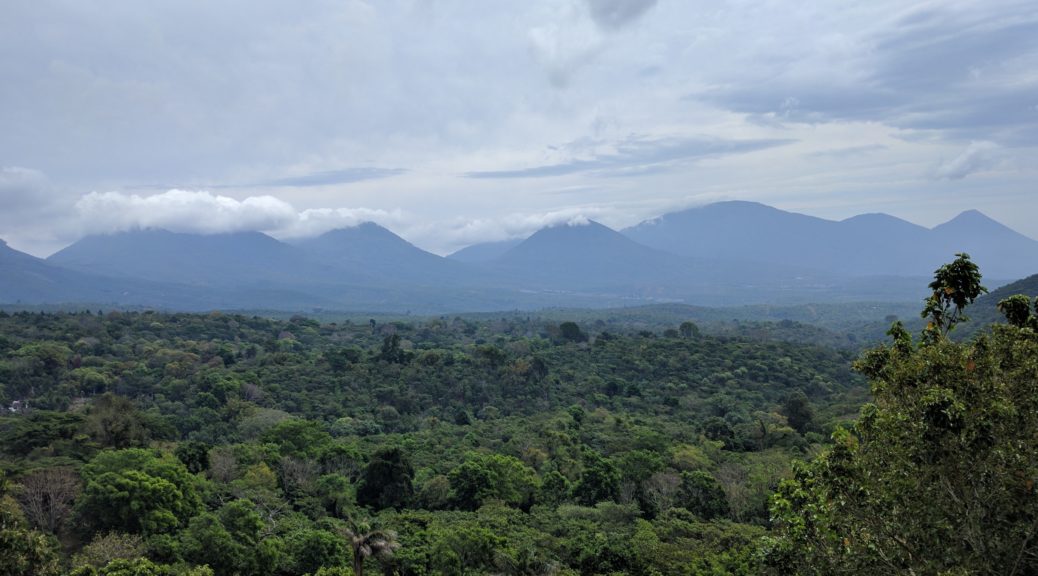
El Salvador: The Little Big Country
El Salvador! The small, little discussed Central American country that appears to slip most peoples minds, ours included at first. After all we’d been through in Guatemala and Mexico, we were ecstatic to discover this new, charming country that packs in a ton of culture and beauty into such a small space.
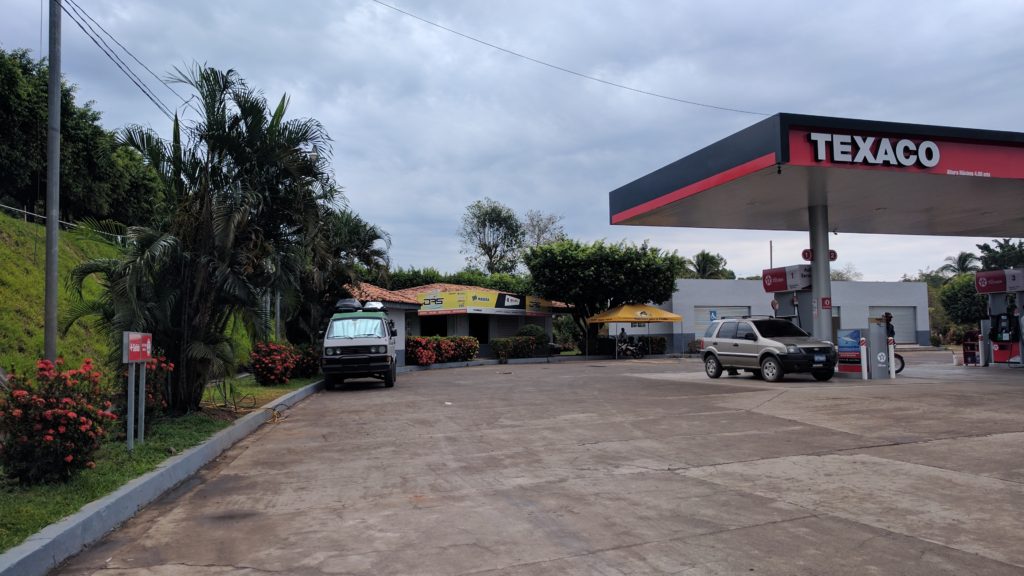 After getting through the border, we didn’t have much time before dark so we settled in at a gas station with vigilance for the night. It isn’t glamorous, but it’s done the trick for us many nights on the trip.
After getting through the border, we didn’t have much time before dark so we settled in at a gas station with vigilance for the night. It isn’t glamorous, but it’s done the trick for us many nights on the trip.
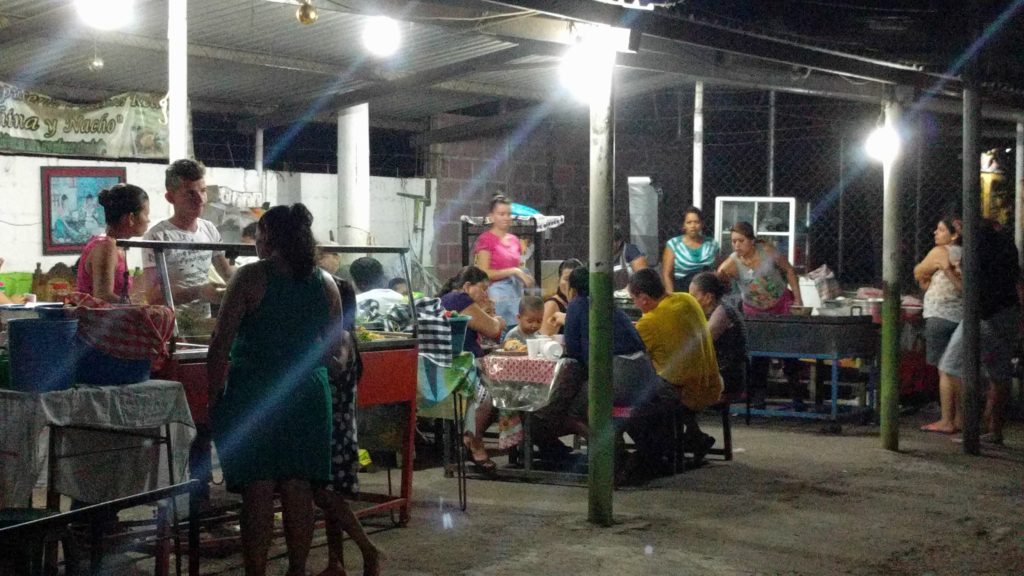 We proceeded to seek out the notorious local food known as the ‘pupusa’ that El Salvador has laid claim. The dough used for tortillas are filled with ingredients such as pork, chicken, beans, garlic, veggies or anything else they have around and cooked on a stove top.
We proceeded to seek out the notorious local food known as the ‘pupusa’ that El Salvador has laid claim. The dough used for tortillas are filled with ingredients such as pork, chicken, beans, garlic, veggies or anything else they have around and cooked on a stove top.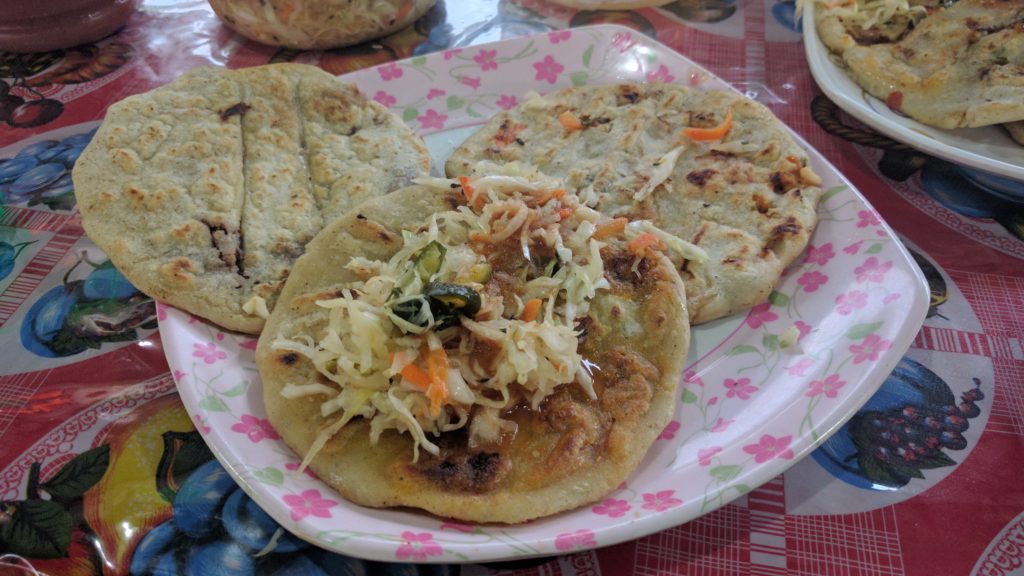 They are served with pickled cabbage, carrots and peppers and a red tomato sauce reminiscent of that used for the beloved tortas ahogadas in Mexico. Very simple, yet very delicious and cheap to boot ($0.50 each!).
They are served with pickled cabbage, carrots and peppers and a red tomato sauce reminiscent of that used for the beloved tortas ahogadas in Mexico. Very simple, yet very delicious and cheap to boot ($0.50 each!).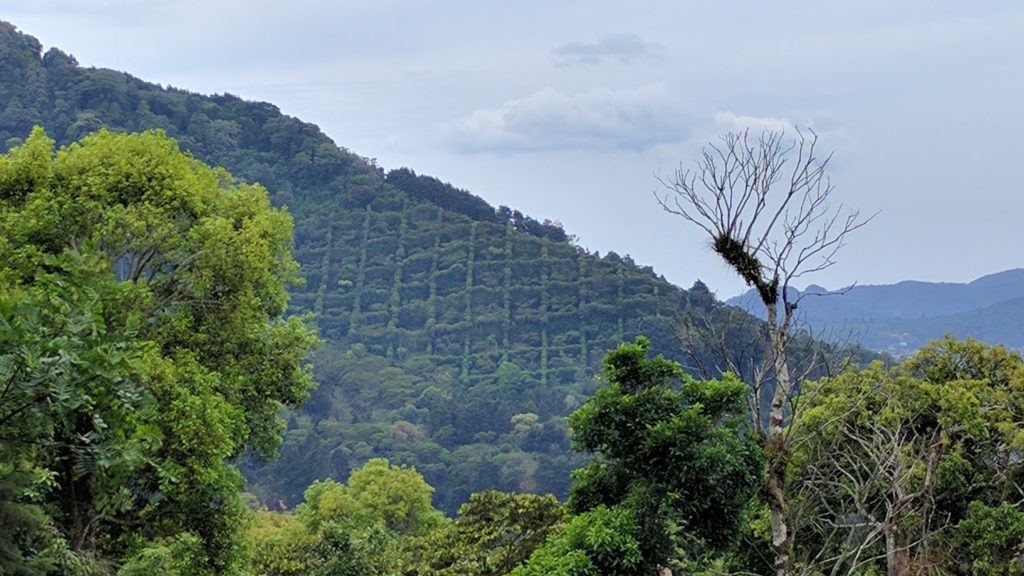 After eating some delicious pupusas and getting a good nights sleep, we headed up into the high country to escape the heat and enjoy some more cool mountain air. Volcano Santa Ana is a popular tourist attraction and is easy to climb in a few hours, so we set our sights on it.
After eating some delicious pupusas and getting a good nights sleep, we headed up into the high country to escape the heat and enjoy some more cool mountain air. Volcano Santa Ana is a popular tourist attraction and is easy to climb in a few hours, so we set our sights on it.
 We took our time though, and explored several little coffee towns along the Ruta de Flores (route of flowers). The drive was beautiful, with lush forests and coffee farms along the hillsides and volcano views all around.
We took our time though, and explored several little coffee towns along the Ruta de Flores (route of flowers). The drive was beautiful, with lush forests and coffee farms along the hillsides and volcano views all around.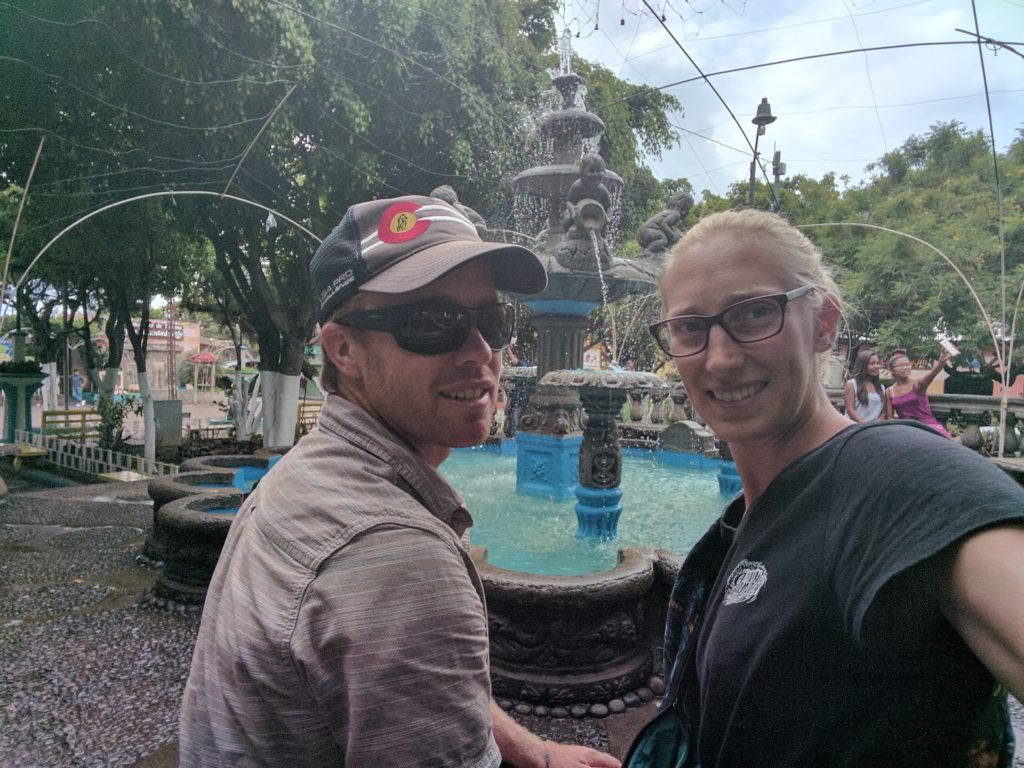
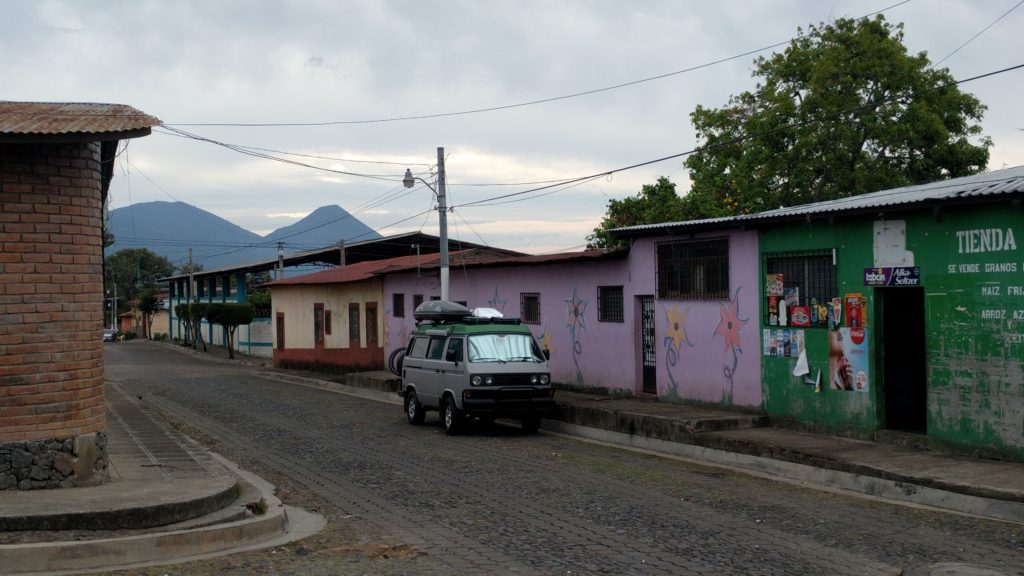 Jauyua was our first stop along the route, where we found a delicious coffee shop to park near for the night. Because it was a Monday, the town was sleepy but we were told that a gastronomica (food) festival occurs every weekend here.
Jauyua was our first stop along the route, where we found a delicious coffee shop to park near for the night. Because it was a Monday, the town was sleepy but we were told that a gastronomica (food) festival occurs every weekend here.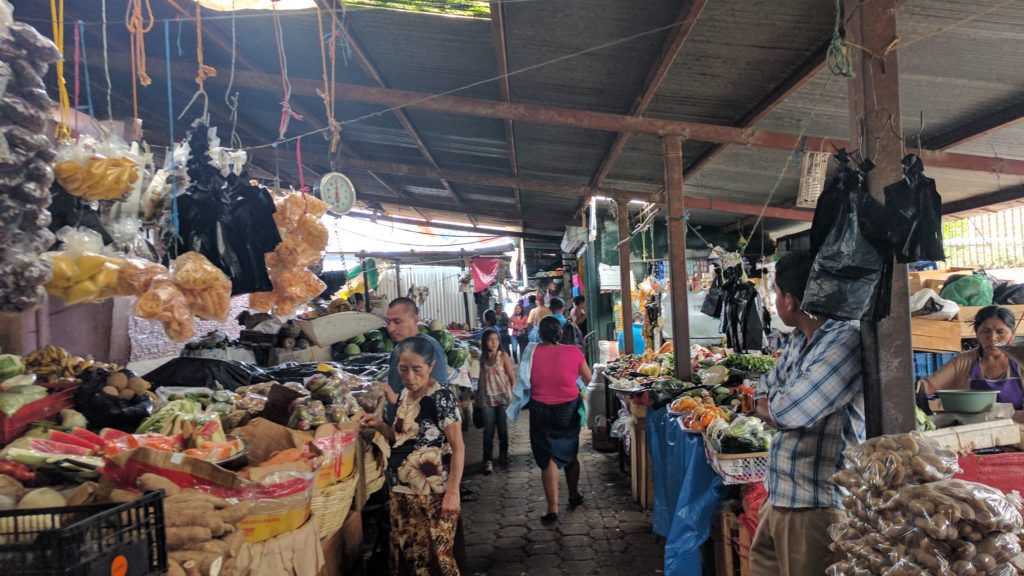
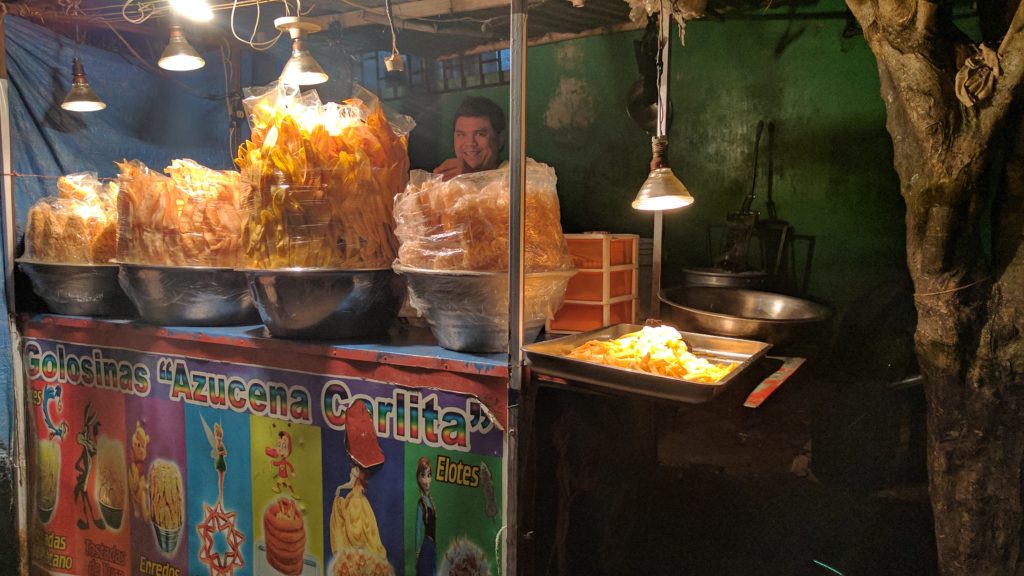 All we found was a local yucca stand, which was another yummy new flavor. Sometimes timing can’t always work out, but we enjoyed the sleepy little town, their market and chatting with the folks at the coffee shop.
All we found was a local yucca stand, which was another yummy new flavor. Sometimes timing can’t always work out, but we enjoyed the sleepy little town, their market and chatting with the folks at the coffee shop.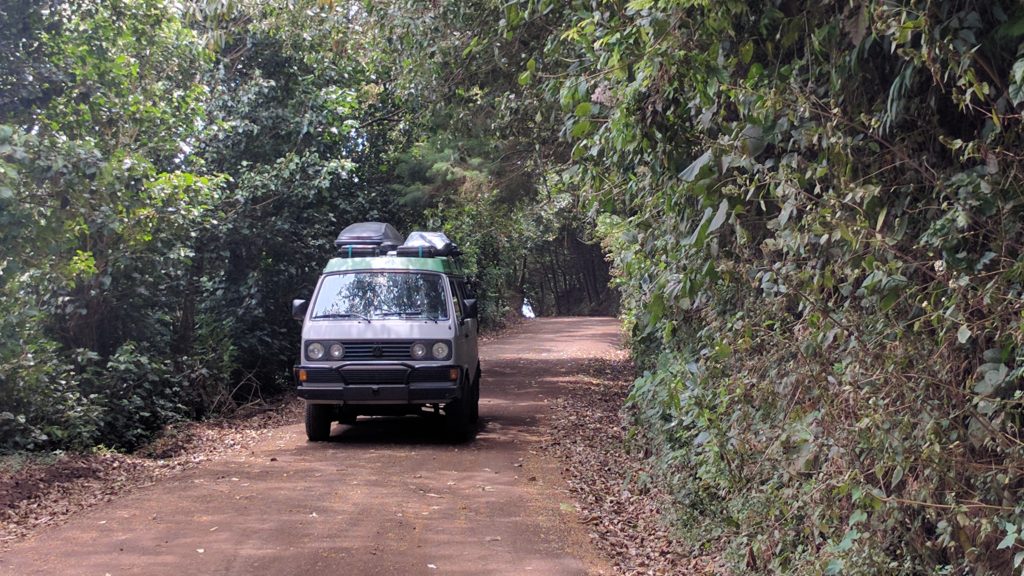
 The following day we drove a lush, seldom driven road towards a green lagoon that sits in an old dormant volcano where there is a small hiking trail and nice picnic spot.
The following day we drove a lush, seldom driven road towards a green lagoon that sits in an old dormant volcano where there is a small hiking trail and nice picnic spot. 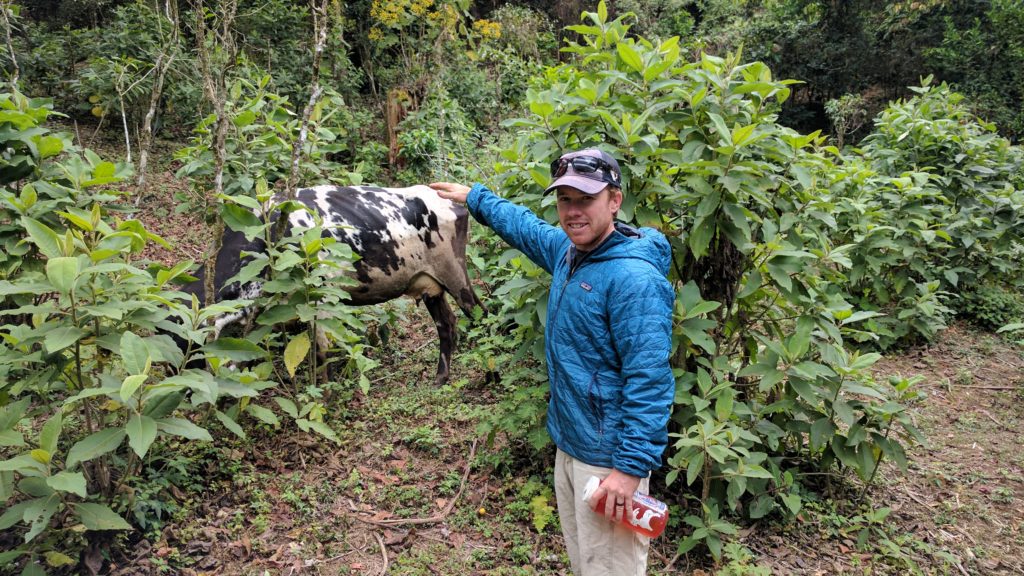
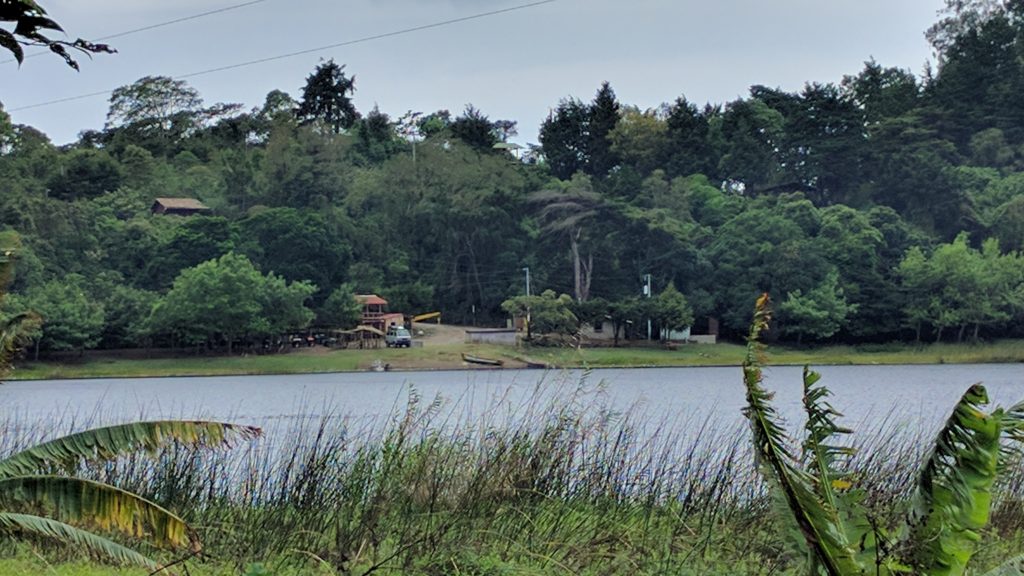 We enjoyed the quiet little lake and even found some lackadaisical cows along the trail!
We enjoyed the quiet little lake and even found some lackadaisical cows along the trail!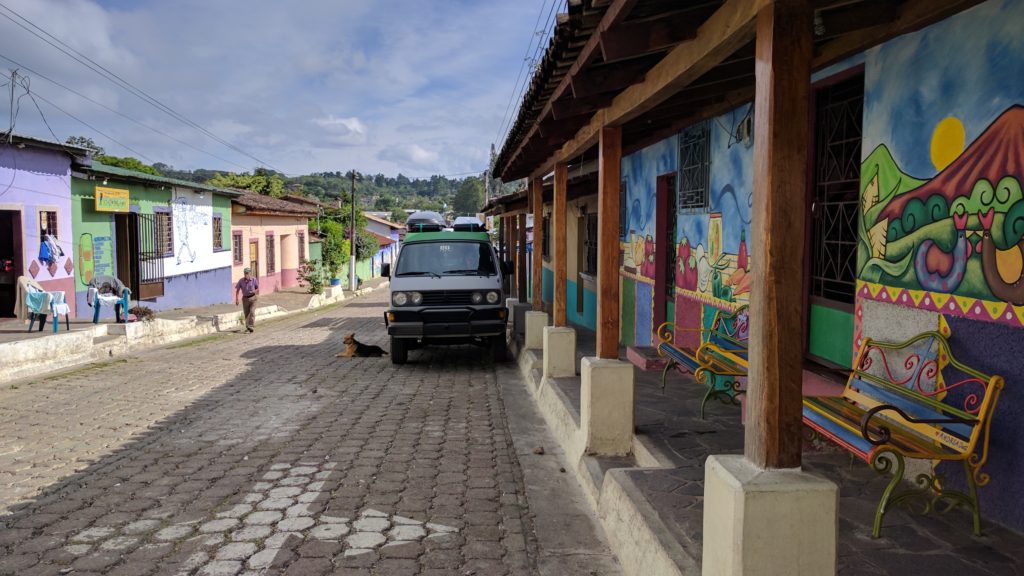 Our next destination was the coffee town of Ataco. We stumbled upon a hostel with some nice folks who let us park right in front with access to wifi and their bathrooms.
Our next destination was the coffee town of Ataco. We stumbled upon a hostel with some nice folks who let us park right in front with access to wifi and their bathrooms.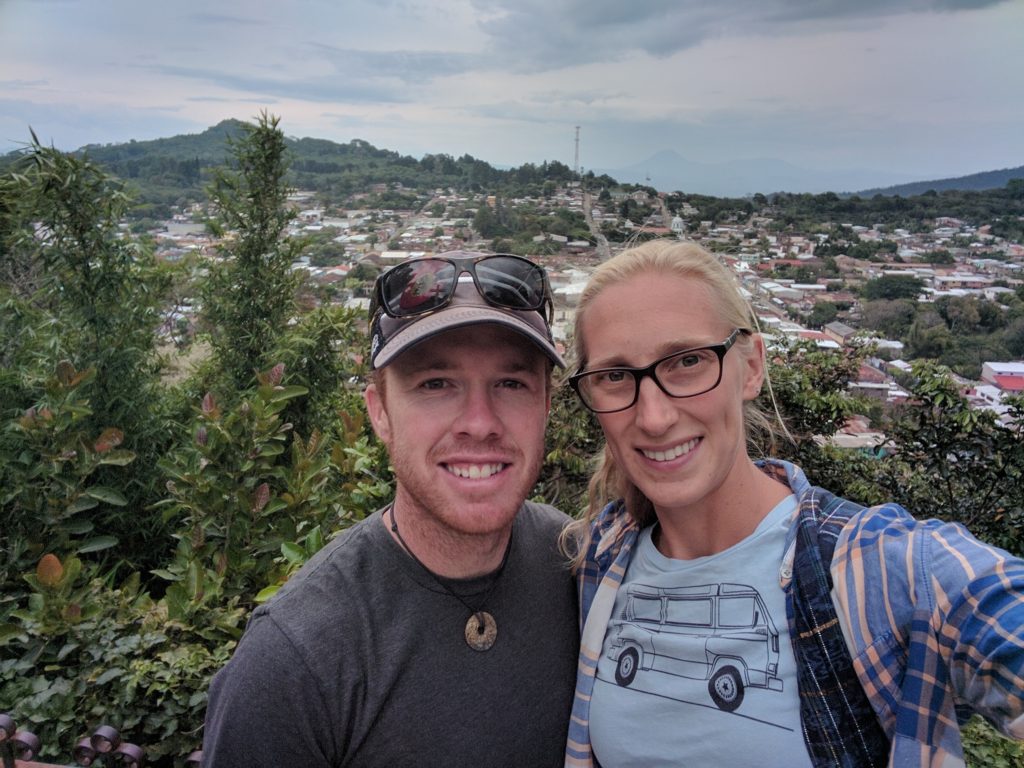
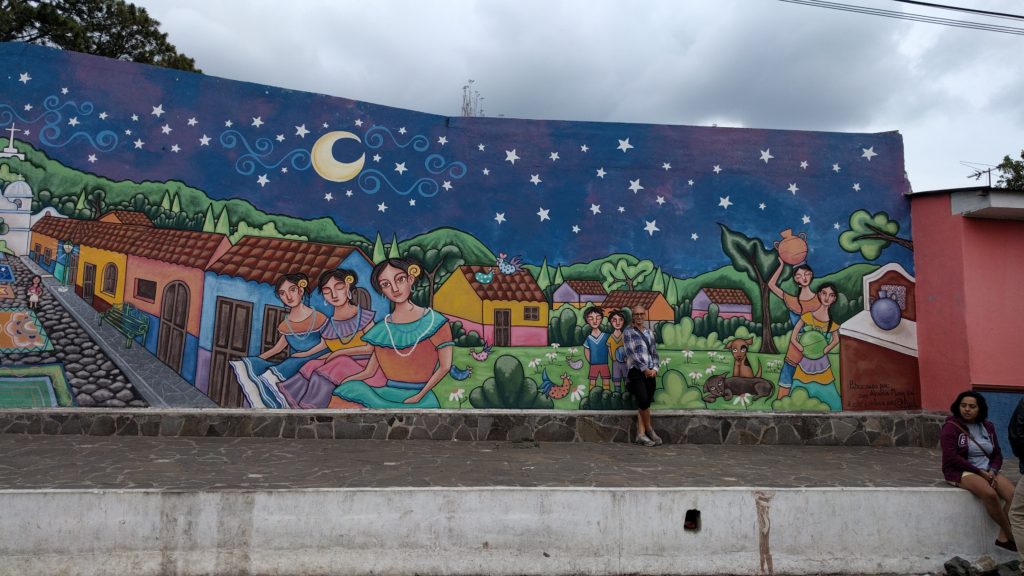 It was a great base for us while we hiked to a mirador (viewpoint) and explored around town discovering abundant food options, walls filled with murals, and an artsy vibe.
It was a great base for us while we hiked to a mirador (viewpoint) and explored around town discovering abundant food options, walls filled with murals, and an artsy vibe. 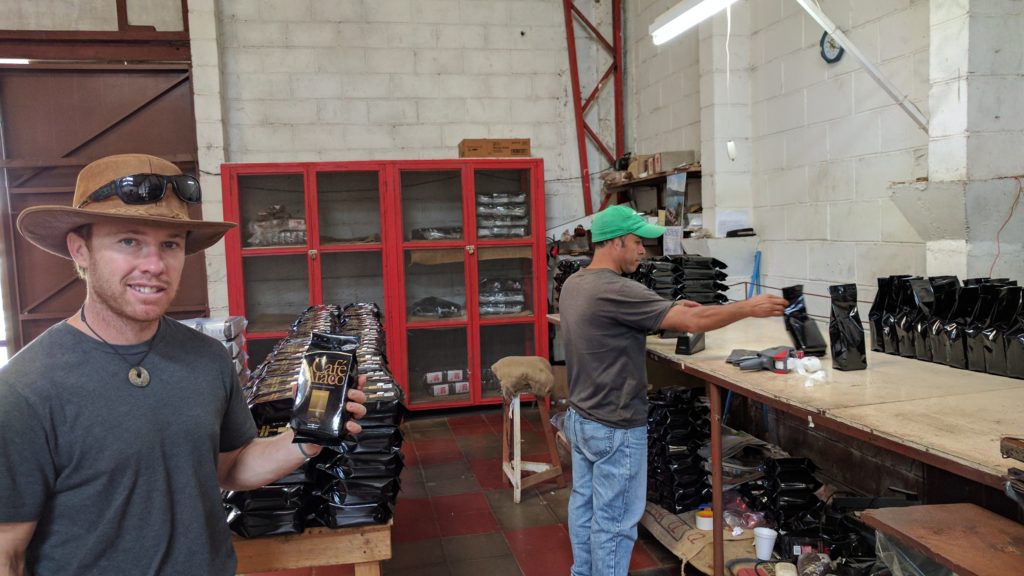 While in coffee country, we did what only good coffee lovers would do, go on a coffee tour! We chose to tour the coffee plantation named “El Carmen,” a medium size commercial facility in El Salvador. During the coffee tour, we saw the entire process after the berries had been picked to the final bagging and shipping.
While in coffee country, we did what only good coffee lovers would do, go on a coffee tour! We chose to tour the coffee plantation named “El Carmen,” a medium size commercial facility in El Salvador. During the coffee tour, we saw the entire process after the berries had been picked to the final bagging and shipping.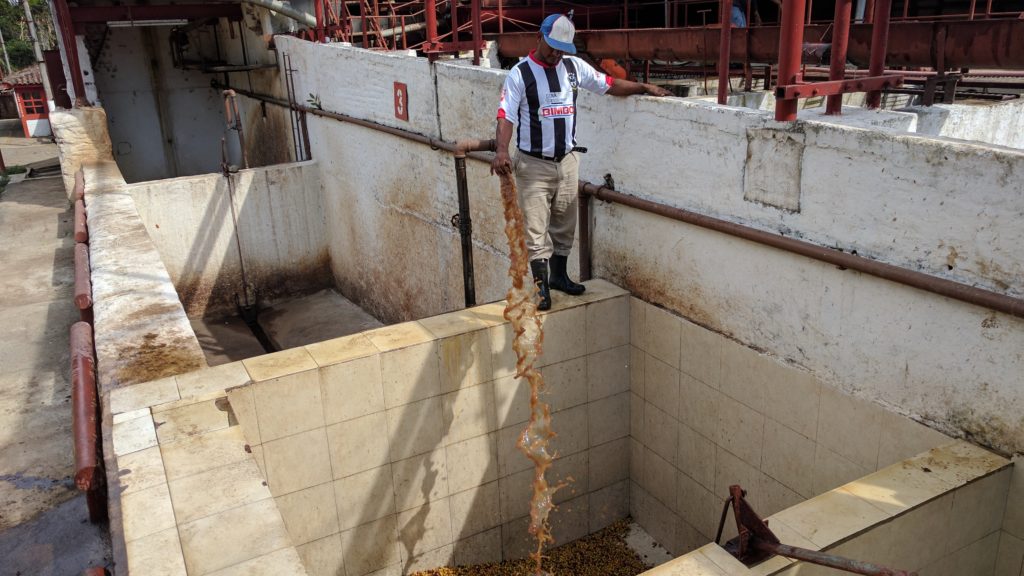 The coffee berries come on trucks in large and small batches from farms all over the area to be processed. They are dropped into large holding cells of water where they determine the quality. The ripe, good quality beans sink while the lesser ripe beans float.
The coffee berries come on trucks in large and small batches from farms all over the area to be processed. They are dropped into large holding cells of water where they determine the quality. The ripe, good quality beans sink while the lesser ripe beans float.
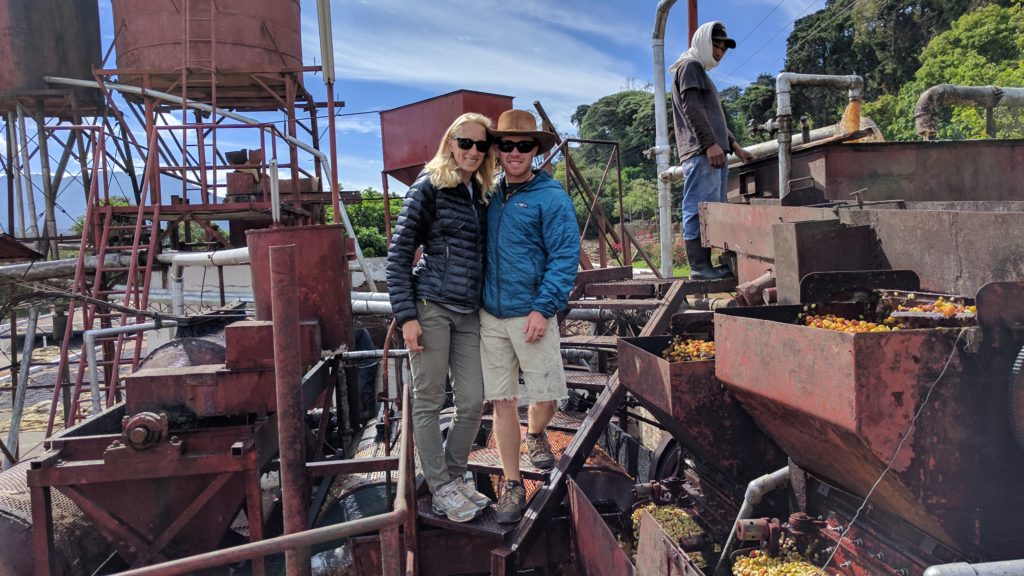 They are then sent through a machine that slightly grinds and presses them through screens to take off the skin of the berry. Following that, they dry for a few days before being washed one final time to remove the sweet-mucus pulp around the bean.
They are then sent through a machine that slightly grinds and presses them through screens to take off the skin of the berry. Following that, they dry for a few days before being washed one final time to remove the sweet-mucus pulp around the bean.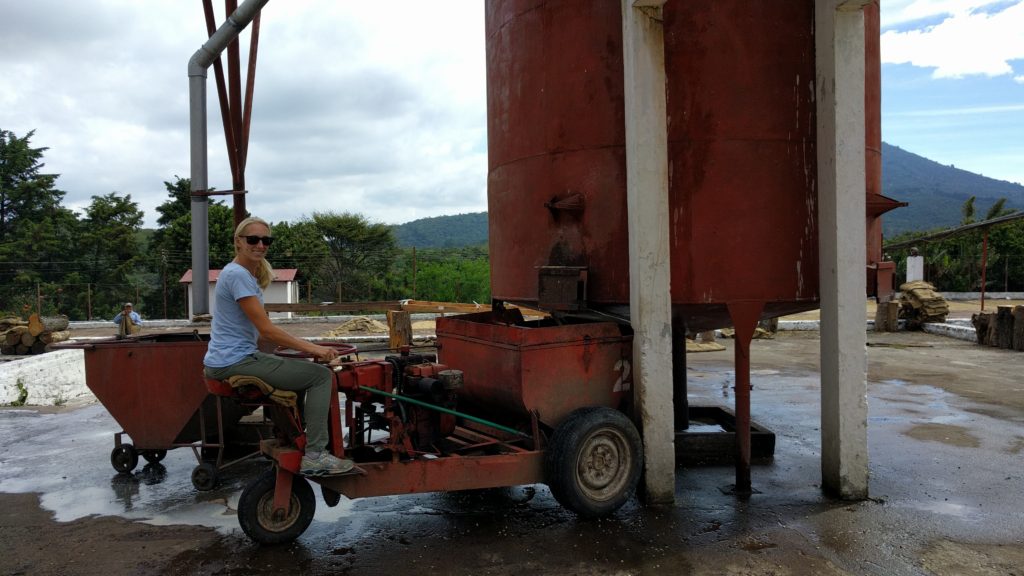
 After the final wash, they empty them into a tractor and take them out to dry in the sun for up to 2 weeks, constantly stirring them with rakes and shovels, until the beans are a nice green color and have the same moisture percentage (about 10%).
After the final wash, they empty them into a tractor and take them out to dry in the sun for up to 2 weeks, constantly stirring them with rakes and shovels, until the beans are a nice green color and have the same moisture percentage (about 10%).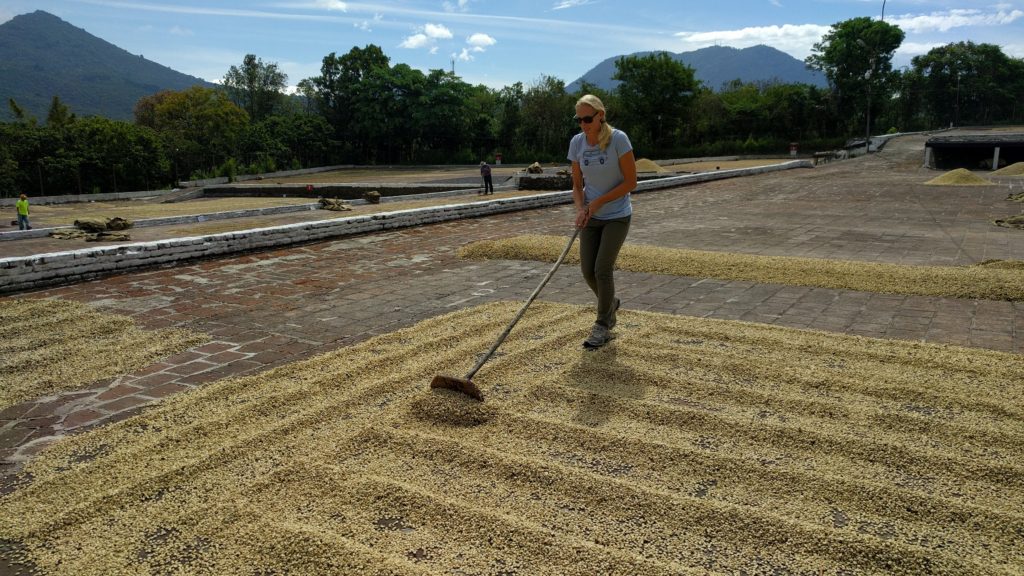 Once they are dry enough, they send the bags to be weighed (150lbs each!) and then stored prior to purchase. They can be stored for up to one year before roasting.
Once they are dry enough, they send the bags to be weighed (150lbs each!) and then stored prior to purchase. They can be stored for up to one year before roasting. 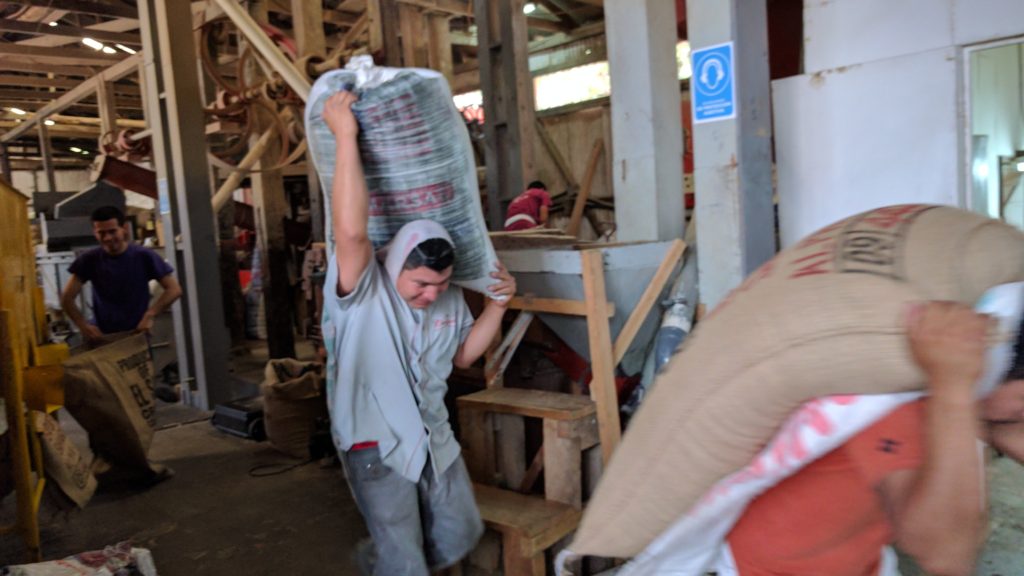
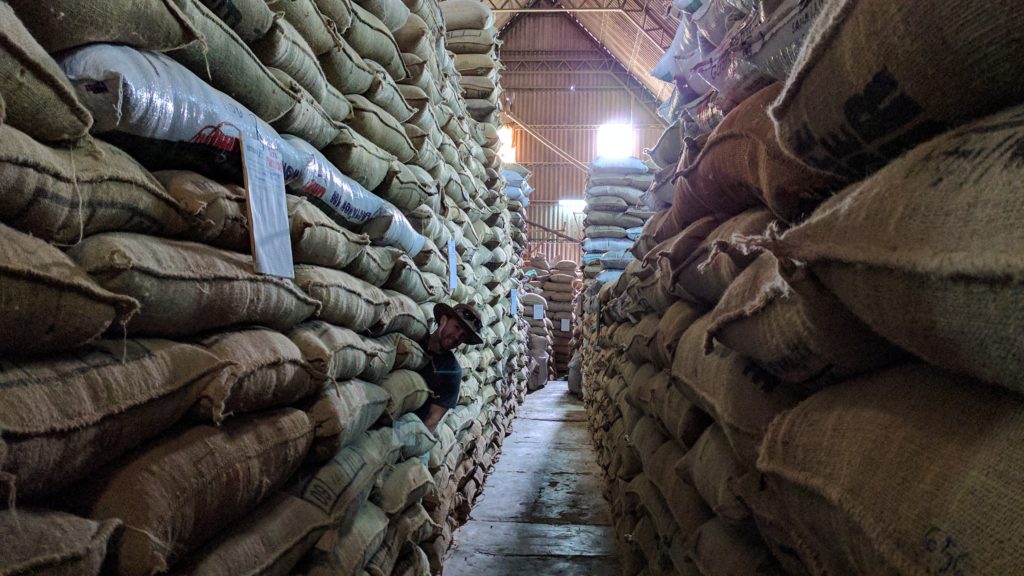 Once there is a buyer in place, the beans are sent through another line of machines that remove the final husk. Last but not least, the beans are sent down a conveyor belt where upwards of 60 women (paid $7/day) painstakingly pick out debris or bean imperfections.
Once there is a buyer in place, the beans are sent through another line of machines that remove the final husk. Last but not least, the beans are sent down a conveyor belt where upwards of 60 women (paid $7/day) painstakingly pick out debris or bean imperfections. 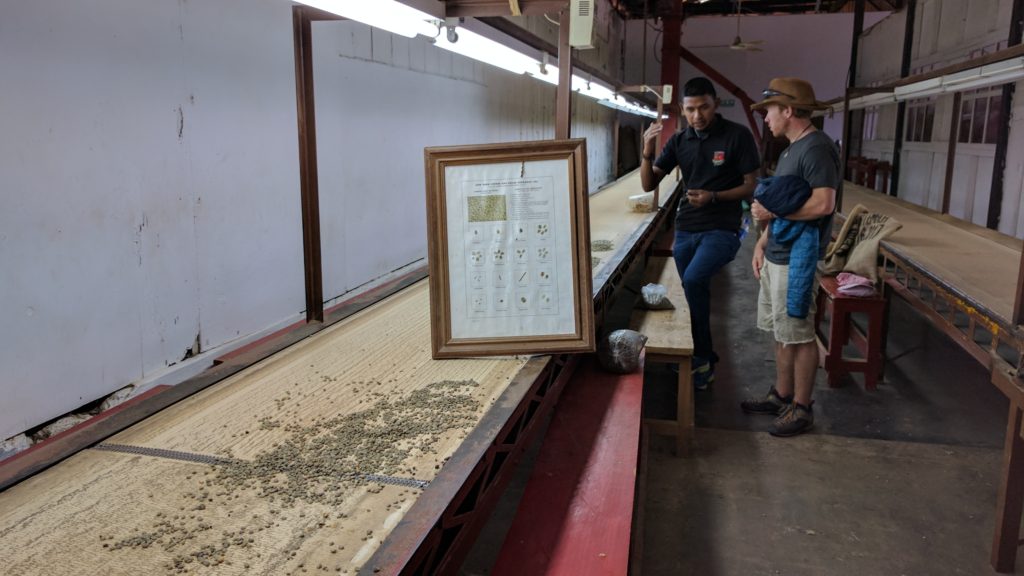 European countries are strict about this step requiring less than 5 imperfections per 100g of coffee. Over 80% of all El Salvadoran coffee gets exported, and most of it is high-dollar gourmet coffee. Some of the coffee processed here is even bought by Starbucks!
European countries are strict about this step requiring less than 5 imperfections per 100g of coffee. Over 80% of all El Salvadoran coffee gets exported, and most of it is high-dollar gourmet coffee. Some of the coffee processed here is even bought by Starbucks! 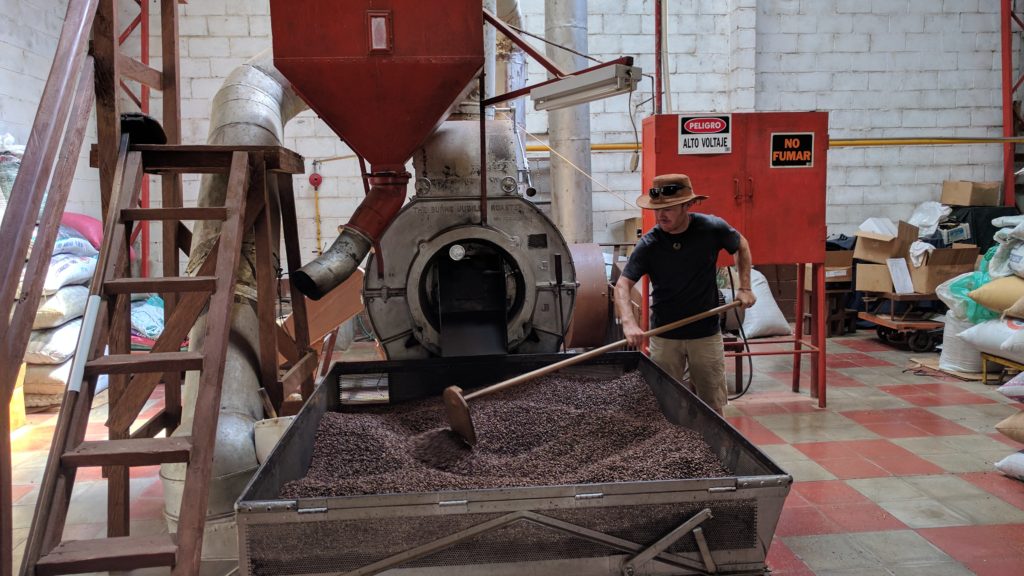 The last 20% is roasted on sight, hand package and sent out to local shops for purchase.
The last 20% is roasted on sight, hand package and sent out to local shops for purchase. 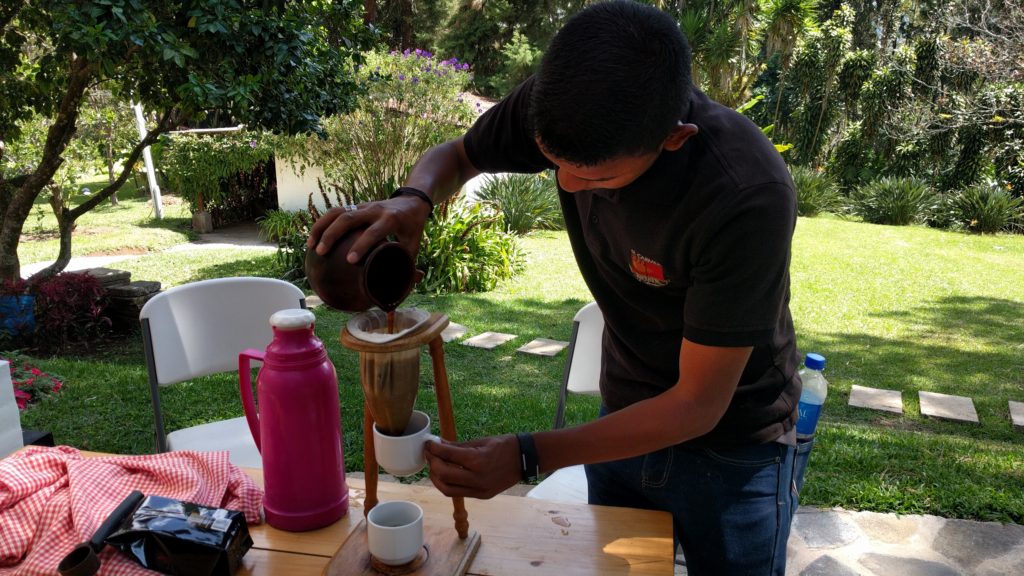 To conclude the tour, our guide made us two cups of delicious coffee through the traditional drip method with a filter cloth and it was delicious!
To conclude the tour, our guide made us two cups of delicious coffee through the traditional drip method with a filter cloth and it was delicious! 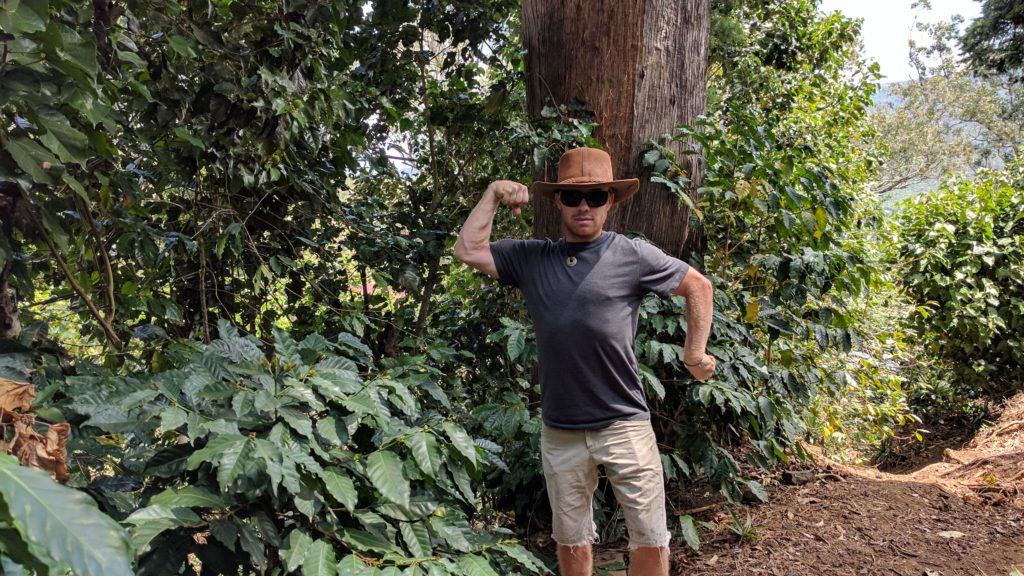
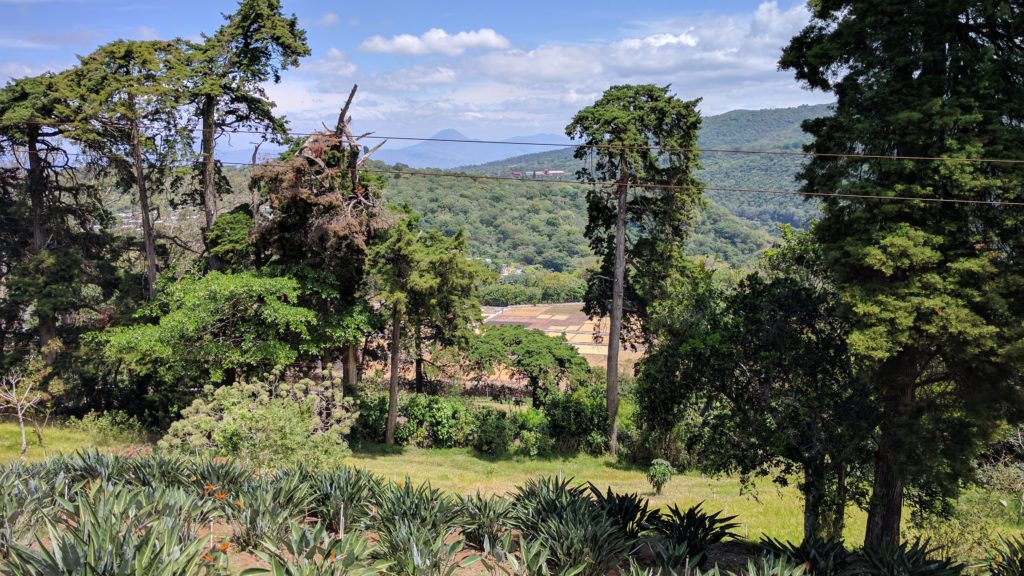 Feeling full of coffee energy, we wandered up the coffee plantation hillside and were rewarded with a grand view of the area and the beans drying below.
Feeling full of coffee energy, we wandered up the coffee plantation hillside and were rewarded with a grand view of the area and the beans drying below.
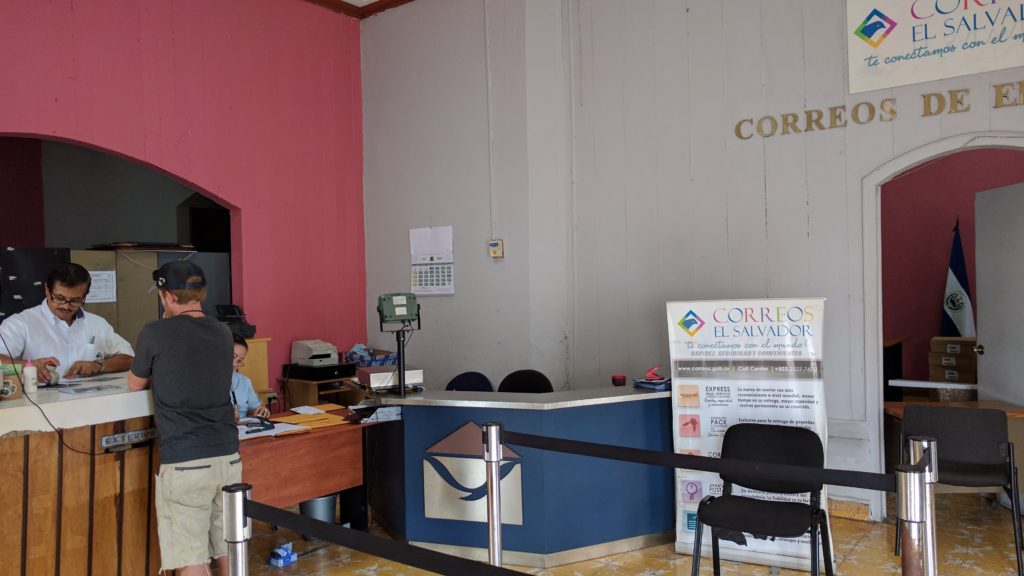 Afterwards we headed into the nearest town, Ahuachapan, to grab some more groceries, send a post card and enjoy the central park. On the drive down we saw advertisements for hotsprings and decided, why not?
Afterwards we headed into the nearest town, Ahuachapan, to grab some more groceries, send a post card and enjoy the central park. On the drive down we saw advertisements for hotsprings and decided, why not?
4 thoughts on “El Salvador: The Little Big Country”
I have a new appreciation for the cup of coffee that I am drinking while reading your blog. El Salvador sounds like a little treasure of a country, just begging to be explored. So glad you guys got to experience it on your journey.
Bring me back some beans!
“Java blues, java blues
Coffee’s got me
The only legal pick me up
That’s here to stay
I’m gonna stay high
Drinking coffee ‘ til I die
Java blues. ” By Rick Danko
BTW your El Salvador photos didn’t appear on your blog. Only saw two pictures: the gas station and a portrait of you both near a fountain. Can’t wait to see the pictures. Take care out there.
Have a look now, should be back up. Sorry about that.